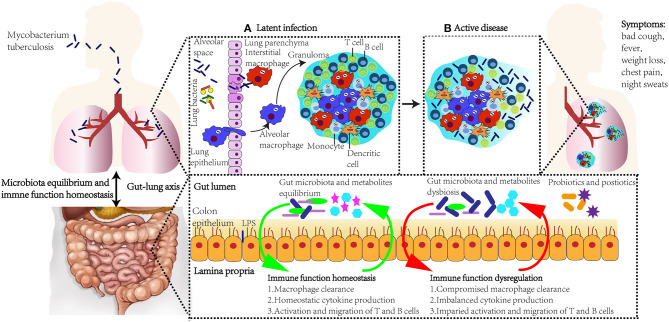Figure 1.
The role of immune response, gut microbiota, lung microbiota, and gut–lung axis in M. tuberculosis infection. Upon exposure to M. tuberculosis, alveolar epithelial cells are the first cell lines to recognize and bind to the outer surface molecules of the mycobacteria. Immune cells, including macrophages and T and B cells, migrate to infection sites, form granulomas around M. tuberculosis, and restrict its replication (A). However, when granulomas are impaired due to factors, such as HIV infection, smoking, aging, and malnutrition, M. tuberculosis escape from granulomas and spread to other tissues (B). Active TB patients show symptoms such as bad cough, fever, weight loss, chest pain, and night sweats. The gastrointestinal tract and lung influence the microbiota and immune function homeostasis of each other, and this bidirectional gut-lung axis consequently influences the host immune response against M. tuberculosis. Novel supplementation, such as probiotics and postbiotics, could modulate microbiota and regulate immune function, and be applied as strategies in TB prevention and treatment.

